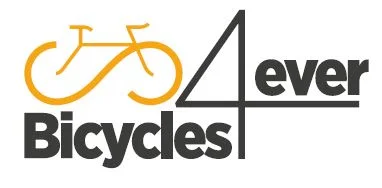Is This The DEATH of The Local Bike Shops?? with GC Performance
Source: GC Performance Youtube Channel: Is This The DEATH of The Local Bike Shops??
Video Is This The DEATH of The Local Bike Shops?? with GC Performance
Video Is This The DEATH of The Local Bike Shops?? with GC Performance YouTube Channel.
Is This The DEATH of The Local Bike Shops??
In recent times, there has been a significant shift in the way consumers purchase bicycles. With the rise of technology and e-commerce, more and more companies are offering direct-to-consumer sales, allowing customers to choose and purchase their desired bike online and have it delivered directly to their doorstep. This move marks a potential shift in the cycling industry towards a more online-centric approach, bypassing traditional brick-and-mortar bike shops. Companies like Canyon, Factor, and specialized have already embraced this model, with Trek now following suit.
Direct-to-Consumer Sales: The Future of Cycling?
The introduction of direct-to-consumer sales by Trek has sparked a debate within the cycling community. While some view it as a convenient and efficient way to purchase bikes, others see it as a potential threat to traditional retail bike shops. The CEO of Trek recently announced this new approach, which allows customers to order a bike online, pay an extra $50 for shipping, and have it delivered almost fully assembled to their doorstep. This new model aims to cater to the changing preferences of consumers who prefer the ease and convenience of online shopping.
The Evolution of Retail
The shift towards direct-to-consumer sales in the cycling industry mirrors the changes seen in other retail sectors, such as the cell phone industry. In the past, there were numerous mom-and-pop cell phone shops where customers could walk in, browse different models, and make purchases. However, as larger brands like AT&T, T-Mobile, and Sprint sought to control the market, they began opening their stores, eventually overshadowing the smaller shops. This resulted in a consolidation of the market, with most consumers choosing to buy directly from the major carriers.
Trek’s Online Presence
Trek isn’t new to the online space, having offered a click-and-collect model for bike sales since 2015. This model allowed customers to order a bike online and have it delivered to their local bike shop for pick-up. However, the new direct-to-consumer sales model eliminates the need for customers to visit a physical store altogether. While this may raise concerns for brick-and-mortar bike shops, Trek assures that they will continue to work with and compensate their retail partners for sales made through the direct-to-consumer channel.
Consumer Preferences and Convenience
The shift towards online shopping is driven by consumer preferences for convenience and ease of purchase. Many customers prefer to shop online to avoid the pressure of in-store sales pitches, haggling, or being pushed towards a purchase they didn’t want. Online shopping offers a hassle-free experience, allowing customers to browse, select, and purchase products from the comfort of their homes. This convenience is further accentuated by the option of home delivery, eliminating the need to visit a physical store.
Premium Home Delivery Services
To cater to customers looking for a more premium experience, Trek offers a premium home delivery service at an additional cost. This service includes white-glove delivery, where the bike is shipped directly to the customer’s home, assembled, and fitted by trained professionals. While this service provides an elevated experience for the customer, it also poses challenges for retailers in terms of logistics and liability. Retailers must ensure they have the necessary tools, equipment, and expertise to deliver the service effectively and safely.
The Impact on Traditional Retailers
The emergence of direct-to-consumer sales poses challenges for traditional brick-and-mortar bike shops. While Trek aims to maintain its partnership with retailers, there is a growing concern among small bike shops about losing sales to online channels. The changing landscape of retail, with an increasing emphasis on online sales, raises questions about the future viability of traditional retail stores.
Adapting to Change
As the cycling industry evolves and embraces new sales models, retailers must adapt to meet the changing demands of consumers. While direct-to-consumer sales offer convenience and efficiency, traditional brick-and-mortar stores can differentiate themselves by providing personalized experiences, expert advice, and exceptional service. By leveraging their knowledge, expertise, and local presence, retailers can carve out a niche in the evolving retail landscape.
The Future of Cycling Retail
The future of cycling retail is likely to be a combination of online and offline channels, with direct-to-consumer sales playing a significant role. While online sales offer convenience and accessibility, traditional retail stores provide a unique and personalized shopping experience. By finding a balance between the two, retailers can cater to a diverse range of customers and stay competitive in a rapidly changing market.
In conclusion, the rise of direct-to-consumer sales in the cycling industry marks a significant shift in how bikes are purchased and sold. While this new model offers convenience and efficiency for customers, it also poses challenges for traditional brick-and-mortar bike shops. Retailers must adapt to meet the changing demands of consumers and find ways to differentiate themselves in an increasingly digital world. By embracing innovation, fostering partnerships, and providing exceptional service, retailers can navigate the evolving retail landscape and thrive in the future of cycling retail.
The opinions expressed in this space are the sole responsibility of the YouTube Channel GC Performance and do not necessarily represent the views of CicloNews.

